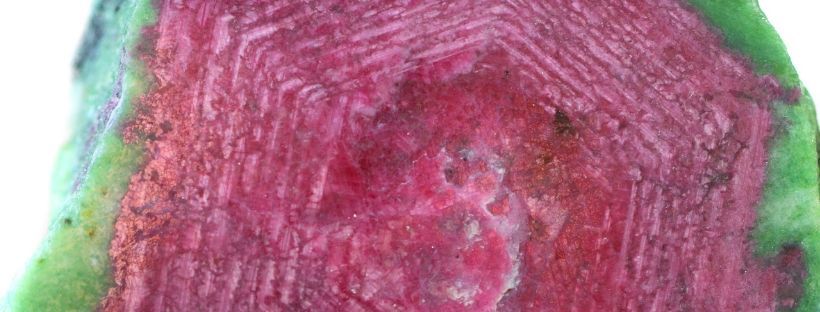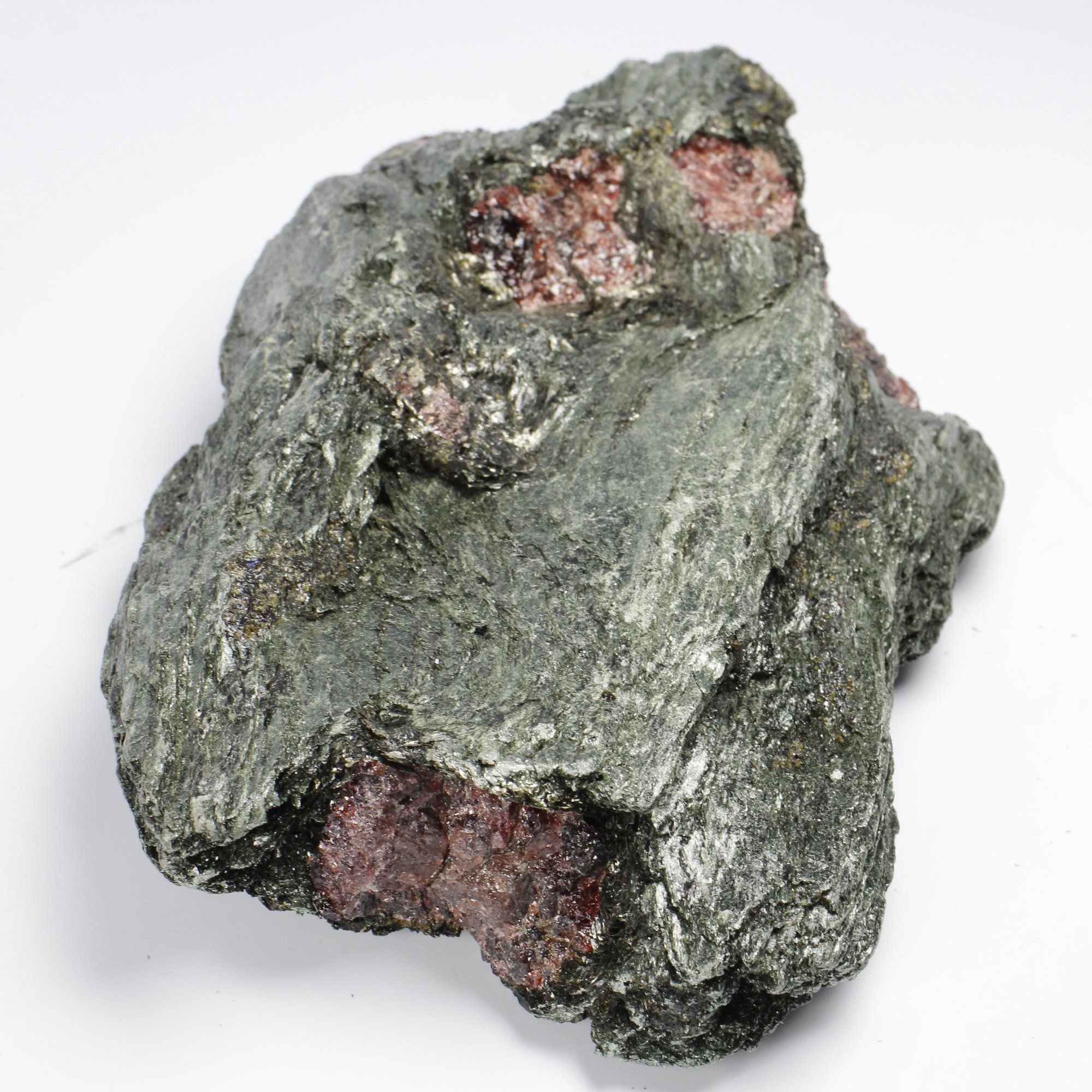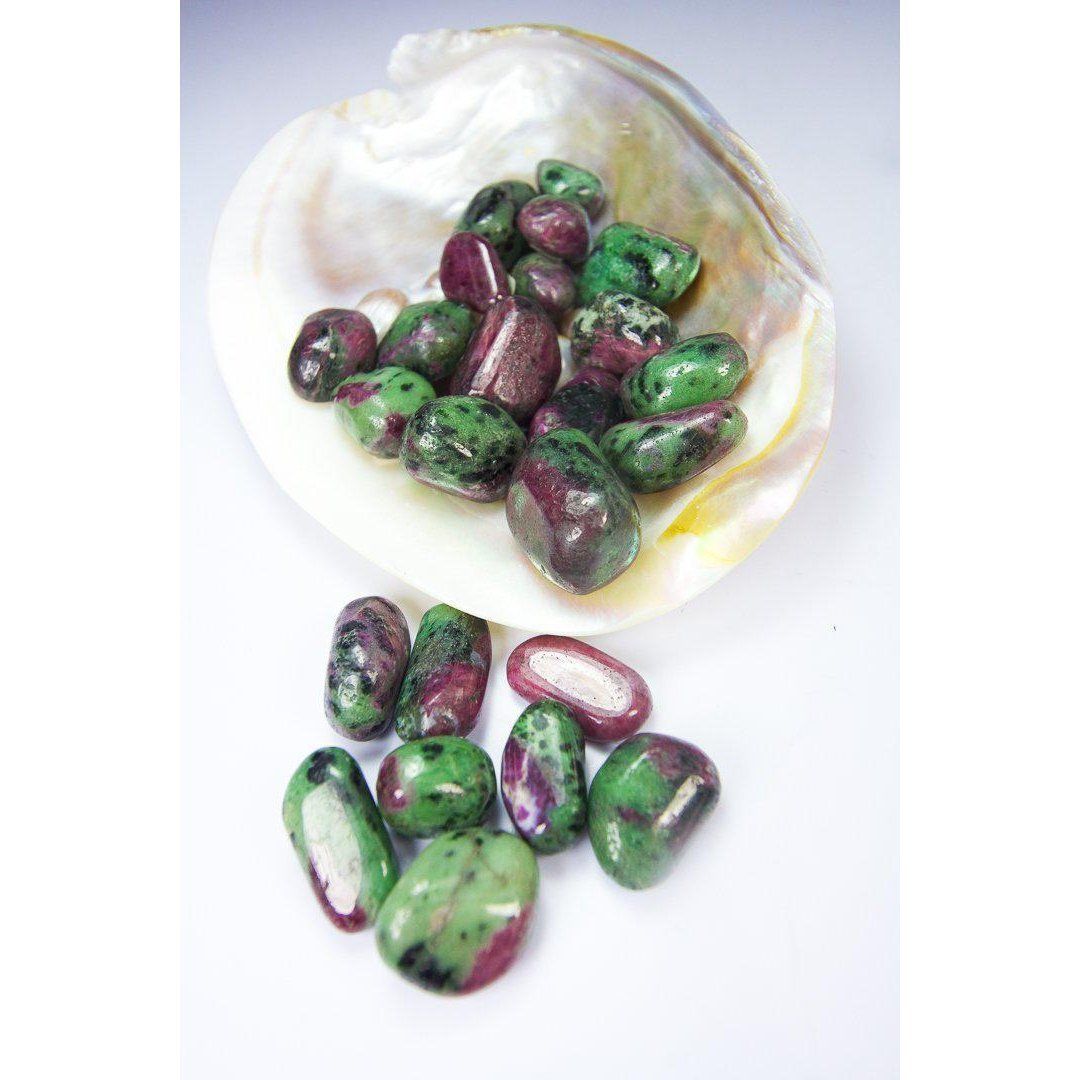Ruby gets its red color from trace amounts of chromium within this gem mineral. Therefore, it has a distinct hue that makes it stand out against the blues and greens of kyanite, fuchsite and zoisite. In all three cases the Rubies occur as red blebs in the blue or green backgrounds. In some cases the blebs can preserve the natural hexagonal crystal shape of the Ruby and appear highly angular against the more flowing blues and greens.
Ruby in Kyanite is the most distinct of these three variations visually speaking. Kyanite, Al2SiO5, is generally blue in color and makes it readily distinguished from Fuchsite or Zoisite, which are both green.
Zoisite, Ca2Al3(SiO4)3(OH), and Fucshite, K(Al,Cr)2(Si3AlO10)(OH)2, both get their green hue from the presence of chromium, the same element that turns Rubies red! Zoisite, which does NOT have chromium (Cr) in its chemical formula, is considered an allochromatic ('other colored') mineral because it gets its color from a trace impurity and can be different colors depending on which trace element is present. Fuchsite, on the other hand, will always be green because the chromium is built into its structure and is called an idiochromatic ('same colored') mineral. Based on this information, do you think Rubies (Al2O3) are allochromatic or idiochromatic? ... ... ...That's right! Since there is no chromium in its chemical formula, Rubies are allochromatic. If you add trace amounts of titanium to corundum (Al2O3), you get blue Sapphires instead of Rubies! A pure specimen of corundum would actually be colorless or white! Now back to the Ruby in Zoisite and Ruby in Fuchsite...
Despite the fact that Ruby in Zoisite and Ruby in Fuchsite are both red blebs in green stones, there exist some distinguishing characteristics. Ruby in Zoisite will often have black specks mixed in with the green and the colors will appear more crisp and distinct, while Ruby in Fuchsite will more often have white or blue halos around the Rubies and fuzzy gradation of color. The white and blue halos you can see around many of the Rubies in Ruby in Fuchsite are actually other minerals (albite and kyanite, respectively) and have a watercolor like appearance because the halos actually represent a time in the rock's formation when all 4 minerals were growing into each other at the same time! If we look at the the chemical formulas we can see how the mineral in the center (Ruby, Al2O3) is the simplest and becomes more complex as we move outward to the blue halo of Kyanite, Al2SiO5 then the white halo of Orthoclase Feldspar, KAlSi3O8, and lastly to the green Fuchsite Mica, K(Al,Cr)2(Si3AlO10)(OH)2.



